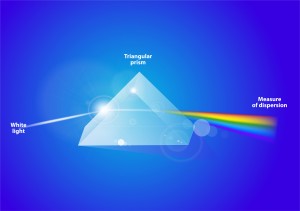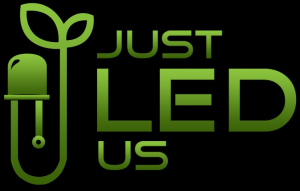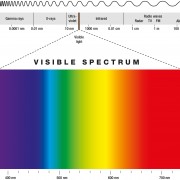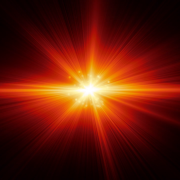Colour of Light and Energy Levels

Prism Dispersing Light of Different Wavelengths
As you know, plants get their energy from light, but you might not know that different colors of light have different energy levels. Think about the colors of a rainbow. All of these colors are in white light. While using a prism you can separate the white light into the colors. (That’s what the raindrops are doing when we see a rainbow.) At the purple, violet & blue end of the scale the light is at its highest energy. It has short wavelengths. The red end is lower energy, it has long wavelengths.
Colour of Light and Energy Levels:
What wavelength goes with with a colour?
The shorter the wavelength the more energy a color has. The color you see when you look at an object is the color that the light is reflecting back at your eye. Plant leaves (usually) look green to us because they are reflecting the green back. This means that they are not absorbing the green light. They are absorbing the other wavelengths. The ones that give the plant the most energy are the ones at the purple & blue end of the spectrum.
Plants are certain colors because their pigments absorb light most effectively in certain regions of the visual light spectrum. As you know, plants are usually green, which means that most other colors are absorbed. One of the most common pigments is called chlorophyll, and one of the varieties is responsible for the green color of plants; it strongly absorbs purple-UV, blue and red, orange and infra-red-IR light, which leaves only the green light to make it to our eyes. NASA has tested LED grow lights for their high efficiency in growing food in space for extraterrestrial colonization. Findings show within NASA studies that plants benefit from the use of red, green and blue parts of the visible light spectrum.
Related Article: Photoreceptors & Spectral Absorption
Ref: NASA





Leave a Reply
Want to join the discussion?Feel free to contribute!